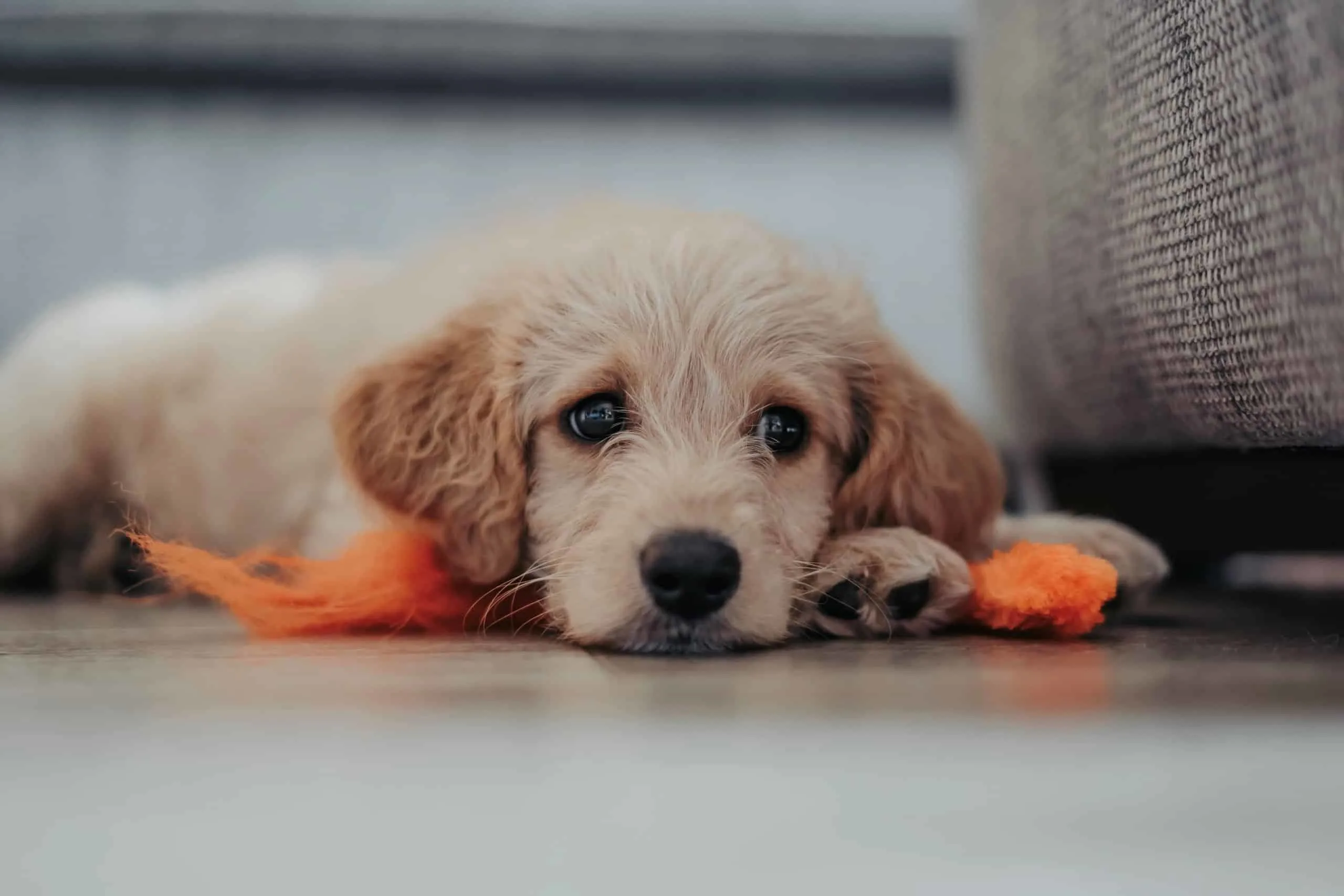Bringing a new puppy into your life is an exhilarating experience filled with joy, cuddles, and of course, a whole lot of responsibility.
As any loving dog owner knows, puppies require a lot of attention, care, and supervision, much like human babies.
But what happens when reality hits and you’re faced with the dilemma of leaving your furry friend alone for an extended period, like 8 hours?
Is it okay, or should you be concerned? Let’s delve into this topic so you can choose your optimal solution.
Note that dogs under the age of 6 months old should not be left alone for 8 hours and puppies under 12 weeks of age can only be alone for a maximum of two hours.
Understanding Your Puppy’s Needs
First and foremost, it’s crucial to understand that puppies, much like infants, thrive on companionship, routine, and a sense of security.
They’re social animals that crave interaction, stimulation, and guidance.
When they’re separated from their caregivers for too long, it can lead to feelings of anxiety, loneliness, and even behavioral issues.
Socialization and Training
Proper socialization and training are vital aspects of a puppy’s development.
They need exposure to various environments, people, and other animals to grow into well-adjusted adult dogs.
Leaving them alone for extended periods during their formative months can hinder this process and may lead to difficulties in social interactions later on.
Physical Needs
In addition to emotional and social needs, puppies have physical requirements that must be met regularly.
They need frequent bathroom breaks, playtime, exercise, and meals throughout the day.
Leaving a puppy alone for 8 hours can result in accidents, pent-up energy, and potential health issues if they’re unable to relieve themselves or engage in necessary activities.

Consideration for Age
Age plays a significant role in determining whether it’s appropriate to leave a puppy alone for an extended period.
Younger puppies, especially those under six months old, have limited bladder control and may not be able to hold it for 8 hours.
As they grow older and their bladder capacity increases, they can gradually tolerate longer periods of alone time.
Alternative Options
If your schedule requires you to be away from home for an extended period, it’s essential to explore alternative options to ensure your puppy’s well-being.
This may include:
- Puppy Daycare: Enrolling your puppy in a reputable daycare facility where they can socialize, play, and receive supervised care in your absence.
- Dog Walker: Hiring a dog walker to visit your home midday to provide bathroom breaks, exercise, and companionship.
- Trusted Friend or Family Member: Asking a trusted friend or family member to check in on your puppy, take them for a walk, and spend some quality time with them while you’re away.
- Crate Training: Utilizing crate training as a safe and comfortable space for your puppy to rest while you’re gone, ensuring they have access to water, toys, and appropriate chew items.
Training Your Puppy to Be Alone
Teaching your puppy to be left alone is a crucial step in dog training and should start as early as possible.
While it’s natural for them to seek constant companionship, it’s essential to teach them independence and confidence when left alone as they will have to be.
Gradually introduce short periods of separation, increasing the duration over time.
Designate a specific area in your home, such as a comfortable crate or a puppy-proofed room, where your puppy can feel secure when you’re not around. Ensure the space is cozy, stocked with toys, and free from potential hazards.
Practice leaving and returning to your puppy throughout the day, gradually extending the time you’re away. Keep departures and returns low-key to avoid creating anxiety.
Reward your puppy with treats, praise, and affection when they remain calm and relaxed during your absences. This positive reinforcement helps them associate being alone with positive experiences.
Identify triggers that signal your departure, such as picking up your keys or putting on your coat. Desensitize your puppy to these cues by performing them without actually leaving, gradually reducing their anxiety response.
Keep your puppy mentally stimulated during alone time by providing interactive toys, puzzle feeders, and chew toys. These activities can help alleviate boredom and anxiety.
Establish a consistent daily routine for your puppy, including feeding times, playtime, exercise, and nap schedules. Predictability can help reduce anxiety and provide a sense of security.
Start with short absences, such as leaving the room for a few minutes, and gradually increase the duration over time. Monitor your puppy’s behavior and adjust your training accordingly.
Never punish your puppy for exhibiting anxiety or distress when left alone. Punishment can exacerbate their fear and anxiety, making training more challenging.
If your puppy exhibits severe separation anxiety or struggles to adjust to being alone despite consistent training efforts, consider seeking guidance from a professional dog trainer or behaviorist.
With patience, consistency, and positive reinforcement, you can help your puppy develop the confidence and independence to thrive when left alone.
Remember to approach training with empathy and understanding, recognizing that every puppy is unique and may require different strategies to succeed.
Conclusion
In conclusion, while it’s not ideal to leave a puppy alone for 8 hours, there are ways to mitigate the impact and ensure their well-being.
Understanding your puppy’s needs, exploring alternative options, and introducing alone time gradually can help ease the transition and ensure a positive experience for both you and your furry friend.
Remember, being a responsible dog owner means prioritizing your puppy’s physical, emotional, and social needs at all times.
Disclaimer: This blog post does not substitute veterinary attention and does not intend to do so. I am not a veterinarian or pet nutritionist. If your dog shows any sign of illness, call your vet.